Google weaves smartphone interfaces into clothes for Project Jacquard
Google is experimenting with smart textile design, weaving conductive threads into clothes to create touch-sensitive panels that work like smartphone screens (+ movie).
Project Jacquard was revealed at Google's I/O developer conference in San Francisco last week, when the tech company also unveiled sensors that use radar to translate hand movements into controls for electronic devices.

Devised by Google's Advanced Technology and Progress (ATAP) department, Project Jacquard explores the potential of integrating conductive threads into textiles so that they recognise simple gestures.
When touched, the conductive threads send signals to a computer that translates the movements of the user into controls. This allows areas of garments to be used as an interface for devices like smartphones and tablets.
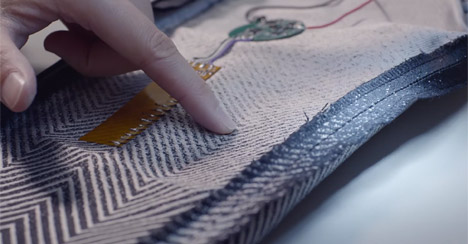
"The structure of textiles is the same as the structure of touchscreens that we use every day on mobile devices and tablets," said project founder Ivan Poupyrev. "That means that if you replace some of the threads in textiles with conductive threads, you should be able to weave a textile which can recognise a variety of simple touch gestures."
By swiping the portion of a textiles embedded with the conductive fibres, users could unlock their phone, answer calls or scroll through articles.
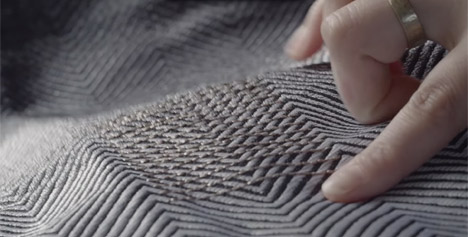
"If you can hide or weave interactivity and input devices into the materials, that will be the first step towards integrating computers into clothing," Poupyrev said.
The yarn is created by replacing strands of thread with thin metal wires or conductive polymers. According to the team, their yarn is highly conductive as well as scalable, so it can be used in industrial weaving machines around the world.
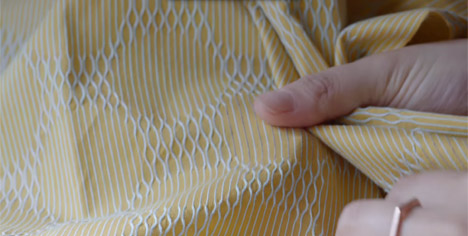
"For textile designers, fashion designers or furniture designers, it is interesting because it's something you're very familiar with," said the project's textile developer Shiho Fukuhara.
The material looks like normal yarn, and can be woven to create a textured surface or integrated so it is completely invisible. Different variations and colours allow designers to experiment with textures and patterns.
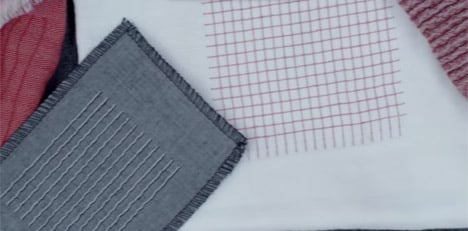
"The idea that Jacquard is an interface that is blended into the clothing that we wear, that has an implication for the way that we use services, products, applications, and anything that we do through our devices," said creative technologist João Wilbert. "It's somehow getting the technology out of the way and making interactions more natural and more seamless."
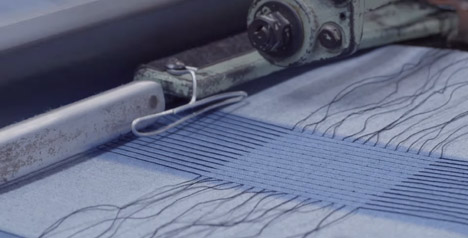
The team is continuing to develop the project so that all of the electronic components needed for the interface to work could be integrated into clothing.
"We're trying to shrink down all the components to the size of a button and ultimately this will be something that's so small we can embed them into the manufacturing process," said lead researcher Nan-Wei Gong.
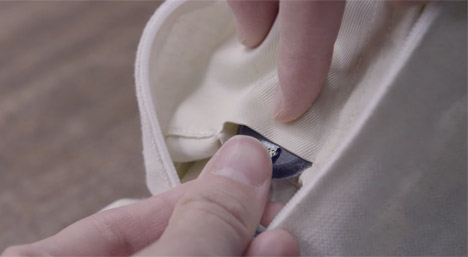
"Software design and fashion design often don't exist together in the same place," added design lead Carsten Schwesig. "We're hoping to make it very simple for each of these parties to collaborate."
Developments in smart textiles have the potential to revolutionise the fashion industry, and could soon enable the possibility to download new colours and patterns to garments instead of buying new ones.
Musician Imogen Heap has also been experimenting with integrating gesture control into garments with her Mi.Mu gloves that turn movements into music, while fashion designer Pauline van Dongen has created collections of clothing that incorporate solar panels and LED lighting.